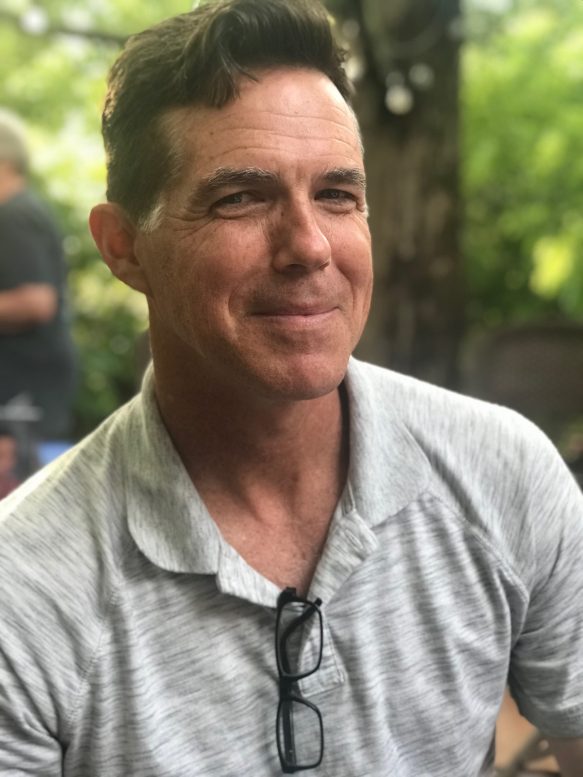By DAVID DUPONT
BG Independent News
As the sporting world turns its gaze toward Russia and the final games of the World Cup, the United States is on the outside looking in.
The U.S. Men’s National Team failed to qualify for the tournament at all after a 2-1 loss to Trinidad and Tobago last year. That’s the first time the team missed out on soccer’s biggest showcase since 1990. Yet even then only once did the U.S. advance as far as the quarterfinals.
The failure of the men’s team (the women’s team, a dominant force in the world’s game. is another story) has cause plenty of head scratching and advice on how to improve. Most focus on training at the elite levels.
Two local men Nathan Richardson and Carlo Celli, both on faculty at Bowling Green State University as well as youth soccer coaches, administrators and parents, have other ideas. Those ideas sprang from their experience here in Bowling Green as well as around the world.
Celli is a native of Italy, where he continues to summer, and Richardson’s scholarship has meant stays in Spain and other Spanish-speaking countries.
The result of their passion for the game and frustrations with its state in the U.S. have resulted in a broad prescription in book form, “Shoeless Soccer: Fixing the System and Winning the World Cup.” The book has garnered attention on Fox News and the authors wrote an opinion piece in USA Today.
The epiphany came in Bowling Green. Richardson was leading winter training sessions for Bowling Green Soccer Club players at the Community Center.
During one practice, one of the young players’ shoe “exploded.” There was no way to fix it, so rather than exclude the boy, Richardson suggested they all play barefoot.
Setting fear of stubbed bruised, even broken, toes aside, the kids played on and Richardson realized being shoeless forced the youngsters to play with more care, and with more technique. No toeing the ball with a bare foot, rather they were forced to have the soft touch every soccer player wants to achieve. They were learning without coaching.
Another revelation came, said Richardson, when the younger sister of a player showed up and wanted to participate. Richardson always welcomes other players so he let her join. That meant no drills, just a game.
As these sessions continued they used different sized balls, even a tennis ball as a way of emulating kids who sometimes had to make their own out of rags.
He observed that the youngsters playing on the hard surface of a basketball court were now learning in the way kids around the world learn to play. Not on lush grass that slows the ball down, not in strictly segregated age groups, not burdened by shin guards or even shoes. Not at games and practices carefully controlled by coaches and monitored by parents.
The kids in Spain or Brazil or Italy, play in the street. That’s where they develop the skills and creativity to help them succeed at elite levels, leading to the World Cup.
In “Shoeless Soccer,” Celli and Richardson turn the world of American soccer, or football as everyone else calls it, on its head.
They write: “Everything will continue to be lost without a transformation in American soccer from a reliance on grass fields and equipment to a culture based on the essentials of street ball that can produce the quality players an able coach like (Bruce) Arena requires for success.”
The book is full of proscriptions: no grass, no shoes, no dills, no coaches, no cancellations, no travel.
All run against key elements of current soccer culture where kids as young as 6 start being sorted from rec programs to increasingly competitive, “elite” teams, that travel greater and greater distances to compete with similar squads.
‘Our kids shouldn’t be traveling until at least junior high age,” Richardson said, “We have the proper conditions behind Conneaut, behind Kenwood, on the black top. All you have to do is play, play, play instead of spending all that time traveling’’
Richardson, who is leaving BGSU to take a position at the University of Texas San Antonio, conceded they overstated in some cases to make a point. The bottom line is that American kids need to play soccer more, and practice less. Cruise by a field where training is going on, and seldom will you see youngsters actually involved in a game, he said
“Kids around the world play soccer. They’re getting a lot of play time and then in time they self-select to go on elite teams. Our kids haven’t developed the creative skills that kids around the world have.”
Richardson was involved in the Bowling Green Youth Soccer Club for 12 years including serving as president for a number of years. In hindsight, he wishes he’d developed and implemented these ideas earlier.
He understands given parental expectations and the lure of gaming systems, there needs to be some system to get children involved.
He liked to see a robust rec department program, where kids play in mix aged small teams, with skilled older players brought in not to coach but to play and show what they can do.
The other advantage, he notes, is that this would be far less expensive for parents.
No need to buy special equipment or uniforms, just a pair of tennis shoes because Richardson said shoes would be allowed, just nothing fancy.


